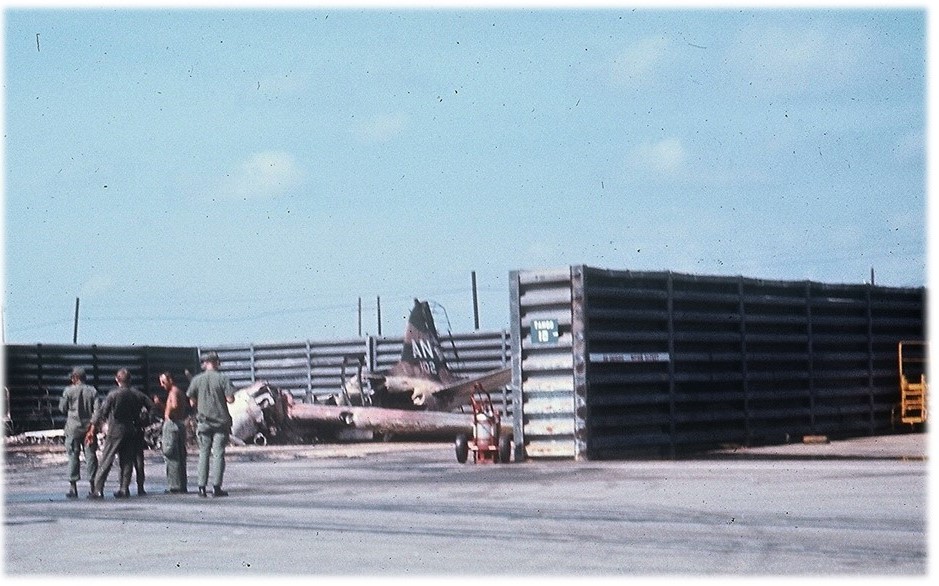By Richard Graham
362nd TEWS 1971-1972
Da Nang, Vietnam, has had various names through the centuries. Its Vietnamese names commonly referenced the nearby Han River or land at the foot of Hai Van Pass. The French called it Tourane. When the airbase opened in the early 60’s, it was just called Da Nang but to everyone based there it was called Rocket City—for good reason.
I arrived at the beautiful Da Nang Beach Resort one evening in late October 1971 during a driving rain storm—the monsoons had started. It was dark and the passenger terminal was almost empty. I was by myself and had no idea of whom to call or where to go. I found a phone and a well-used base phone book and began dialing numbers for 362nd TEWS. After an hour of dialing, I was finally able to contact someone at the squadron to let them know I was there. A “Who are you?” was the response as they apparently had no idea I was coming. Eventually someone was sent to pick me up and, after a brief check-in at squadron operations, I was taken to the squadron’s officer barracks, scheduled to be my home for the next 11½ months.
At the barracks, I was given a warm welcome by several of my new squadron mates. After some brief introductions, they presented me with a helmet and flak jacket and, rather casually, informed me that the VC rockets usually came in after midnight. So, if I heard a siren, I was to put on the helmet and flak jacket and take cover. Next, I was shown a room that I was to share with another pilot and told that there was an AK-47 under my bunk—just in case. Finally, someone put a beer into my hand and said, “Welcome to Vietnam.” Little was I to know, but before I left Da Nang the following September the VC/NVA would have mounted 18 rocket attacks against the base.
Da Nang was susceptible to rocket attacks due in part to the geography of the area. The VC and NVA made use of the rugged mountains and jungle just to the north and west of Da Nang to infiltrate the large 122 mm rockets used to harass the base. Leaving the mountains after sunset, they would move into the rice fields and farms where they would set up their rocket tubes. These tubes were usually mounted on crude stands and armed with primitive timers. 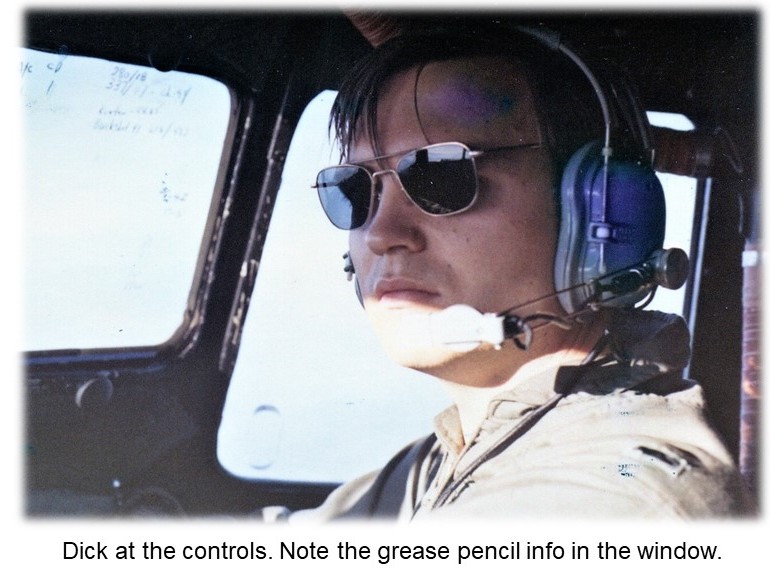 The rockets could then be launched after the VC had left the area while still under the cover of darkness. The crude launchers meant the rockets could not be precisely aimed but only pointed in the general direction of Da Nang and its two runways. This inaccuracy of aiming, combined with the large area of the base, resulted in many of the rockets impacting into open areas but some did find their intended targets. From July 1965 until January 1973, Da Nang experienced more than 90 rocket attacks resulting in over 600 casualties (45 KIA) along with the destruction of some 30 aircraft.*
The rockets could then be launched after the VC had left the area while still under the cover of darkness. The crude launchers meant the rockets could not be precisely aimed but only pointed in the general direction of Da Nang and its two runways. This inaccuracy of aiming, combined with the large area of the base, resulted in many of the rockets impacting into open areas but some did find their intended targets. From July 1965 until January 1973, Da Nang experienced more than 90 rocket attacks resulting in over 600 casualties (45 KIA) along with the destruction of some 30 aircraft.*
In an attempt to provide some advanced warning of an impending attack, Da Nang was equipped with an early warning radar. If the radar detected inbound rockets, sirens would sound around the base alerting everyone to seek cover. This radar did provide a degree of warning and no doubt saved lives but there were also false alarms. The radar might see something like a flock of birds and the sirens would sound and nothing would happen. Other times the first warning of an attack was when the first rocket exploded. The distinctive “ka-thump” from its explosion was enough to drive everyone to seek shelter. The first explosion was usually followed by others as the rockets were “walked” across the base. While the radar was a passive defense against attacks there were also active measures used to protect the base. Until being withdrawn from Vietnam in 1972, US Army or Marine units often conducted offensive ground ops around Da Nang to disrupt the VC and NVA preventing them from setting up the rockets.
A second means of defense came from a battery of 175 mm cannons the Army had based at Freedom Hill on the opposite side of base. The 175’s projectiles were rocket boosted and the rocket flame could be seen accelerating the projectiles toward their targets of suspected VC rocket teams. Sometimes at night we would watch as they fired against enemy positions 15 or 20 miles away. The final layer of defense came from the AC-119 “Stinger” gunships based at Da Nang. These transports, with their distinctive twin boom rudders, were modified to attack aircraft by adding side-firing 20 MM Vulcan cannons and night vision equipment. Their primary mission was to attack targets along the Trail but they also had an anti-rocket base defense mission. Almost nightly, the sky would be illuminated by flares dropped from on high and, on occasion, a curtain of tracers would stream to the ground as a Stinger would find a target outside the base perimeter.
With only a few exceptions, everone in the TEWS squadron accepted the rockets as part of being there and did not get overly stressed from their threat. If the siren sounded, most guys would simply hunker-down as best they could and wait. You soon learned to differentiate the "boom" of outgoing artillery from the "ka–thump" of incoming rockets If, during a late-night card game, a “boom” was heard, someone would might say “outgoing” and keep on dealing. But if there was a "ka-thump", everyone scrambled to find helmets and flak jackets with little being said. Most commonly, the attacks came after we were in bed. My roommate and I had bunk beds and I had the top bunk. If awakened at night either by the siren or explosion, we would both roll out of bed and hit the floor. It was always a race to be the first one to the deck, but if roomie was slow about rolling under his bunk, I would land on him with a resulting "oomph" followed by a string of expletives.
After my arrival and lasting through early 1972, there were only a few random attacks—maybe because of the winter monsoons. Beginning in the spring, the lull ended and the attacks came much more frequently, especially after the North Vietnamese launched their Spring (Easter) Offensive in late March. To those of us in Da Nang, the increase in attacks also seemed to correspond to the reduction of U.S. ground forces as the US withdrawal accelerated. It also appeared to the residents of Gunfighter Village, where we lived, that the bad guys were targeting the living areas more as several of the TEWS barracks were damaged. One rocket made a direct hit on one the second floor of one barracks severely wounding one of our navigators. He was evacuated to Clark AB and did not return to the squadron. There were also near misses like the time a rocket came through the roof of the operations office and hit a safe. This rocket was a dud, much to the relief of the duty officer in the room. Other barracks and offices were also damaged during these barrages.
There were occasional lighter notes to the attacks. One instance was the case a wing flight surgeon who bunked with the 362nd flight crews. During one attack he rolled out of bed and broke his collar bone when he hit the floor. The base hospital then put him in for and he was awarded a Purple Heart. Doc later showed us his award and, quite sheepishly, stated he was underserving of the medal. Other “casualties” of the rocket attacks in ’72 were the base theatre, the covered outdoor basketball courts, and the liner of the above ground swimming pool. How can you fight a war without a swimming pool?
With levity aside, in April of ’72, the rockets hit the 362nd TEWS really hard. Early in the morning of the 13th, the VC attacked with 24 rockets. One rocket hit a fuel truck fueling one of our EC-47’s. The driver of the truck was killed and both the truck and EC-47 #102 were destroyed. Five other aircraft were damaged (including two other EC-47’s) and 10 airmen were wounded. Throughout the spring and early summer, sporadic attacks continued. While there were no rocket attacks on Da Nang in July, the VC made up for it in August. They hit the base with 45 rockets early on August third. The BX took a direct hit and was all but destroyed in the resulting fire. Along with it went the Bamboo Garden restaurant and barber shop. Of course, after the attack, we hurried down Gunfighter Mile to see what happened. The fire departments, American and Vietnamese, tried to extinguish the fires, but most was a total loss with only the Class VI store being saved. I heard later that one GI was killed and twenty others were wounded in this attack. I have read that this was the second time the BX had been hit with rockets having being rebuilt after being destroyed in 1971. In spite of the rockets, everyone carried on with their duties. In July 1972, there was even a story in the Stars and Stripes about the Da Nang Base Operations folks selling rocket parts with the proceeds going to local orphanages. The photo gives a good comparison of the size of the 122 mm rockets in relation to a standard-size wall mounted fire extinguisher. (Click here to see the article.)
The next major attack came at oh-dark-thirty on August 18th. My crew and I were scheduled for the first mission of the day having reported for a 3:00 AM mission brief. After the briefing and some bad GI coffee, the copilot, navigator, and I left operations a few minutes before 0400 and walked down the flight-line to our aircraft. By chance, the aircraft we were to fly was parked in the revetment closest to the maintenance hangar and operations. I had just gotten to the cockpit and was stowing my gear when the rocket sirens sounded. The three of us immediately bolted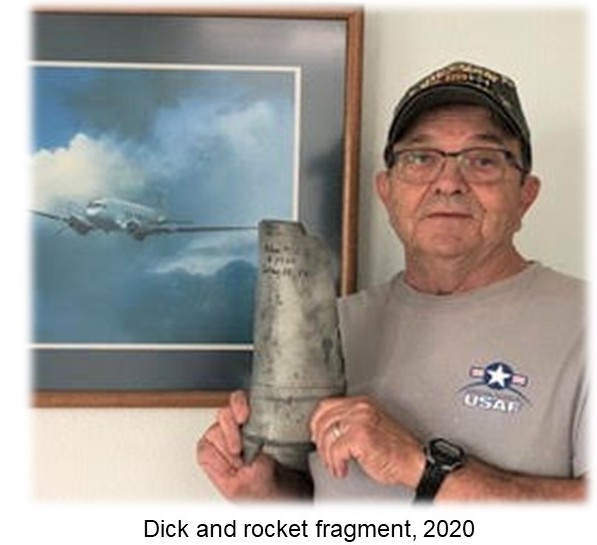 the aircraft and headed towards the nearby bunker (in reality, a CONEX container covered in sandbags). The navigator stopped short and rolled up against the inside of the revetment wall but the copilot and I continued towards the bunker. Clearing the revetment, I saw the first rocket explode in a grassy area near the runway. The two of us then dove under a nearby power cart as I saw the yellow flash of another exploding rocket about 50 yards away. A third rocket then exploded just to our rear and chucks of asphalt and shrapnel began to fall around us but were shielded by the power cart. Thinking a ground attack might follow, I pulled the only weapon I had, my .38 revolver, and loaded it for the first time but the barrage soon ended.
the aircraft and headed towards the nearby bunker (in reality, a CONEX container covered in sandbags). The navigator stopped short and rolled up against the inside of the revetment wall but the copilot and I continued towards the bunker. Clearing the revetment, I saw the first rocket explode in a grassy area near the runway. The two of us then dove under a nearby power cart as I saw the yellow flash of another exploding rocket about 50 yards away. A third rocket then exploded just to our rear and chucks of asphalt and shrapnel began to fall around us but were shielded by the power cart. Thinking a ground attack might follow, I pulled the only weapon I had, my .38 revolver, and loaded it for the first time but the barrage soon ended.
Cautiously making my way out of my makeshift shelter, I began to assess the damage and look for casualties. Luckily no one on the TEWS ramp had been hurt but on approaching the aircraft I saw the remains of a rocket sticking out of the tarmac a few feet in front of the airplane. The far inside wall of the revetment had taken the worst of the blast but I could also see holes in the aircraft near the cockpit and in the right wing. As I began inspecting how badly the aircraft had been damaged, the rocket sirens sounded again. This time I sprinted the 50 yards to the bunker and piled in on top of a bunch of other guys. Luckily, for us at least, the second wave of rockets missed our ramp and landed farther down the field. Unfortunately, the rockets in the second wave did hit and destroy an HH-53 rescue helicopter and an O-2 forward air control aircraft parked at midfield.
While repairable, my airplane had taken significant damage. The cockpit and fuselage had been punctured in several pieces by shrapnel and a couple of windows in the cargo area where blown out. The right wingtip was full of shrapnel holes and the upper wing had some punctures near the fuel tanks. The aircraft was removed from service for inspection and repairs, cancelling my mission. Remembering what happened in April when a rocket hit aircraft #102 just across the ramp, I felt really lucky. This was the only time during my tour that I remember a two-wave rocket attack in Da Nang. A total 35 rockets hit Da Nang that morning killing one person and wounding 21 others. Two aircraft were destroyed and 10 others (including mine) were damaged in the attacks.
 |
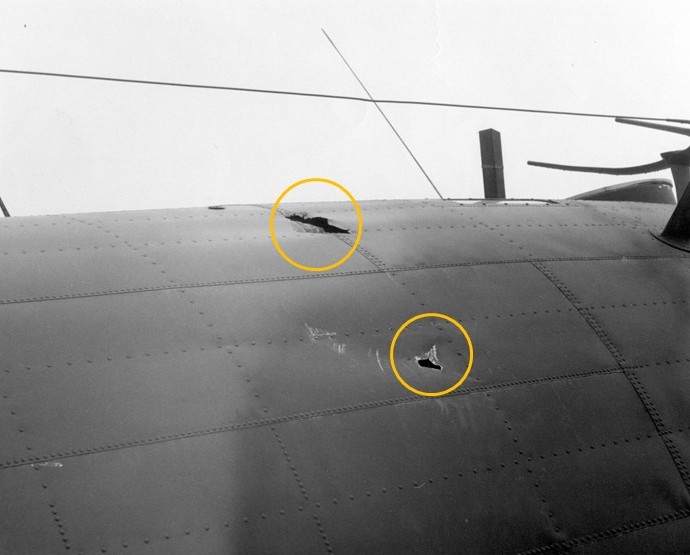 |
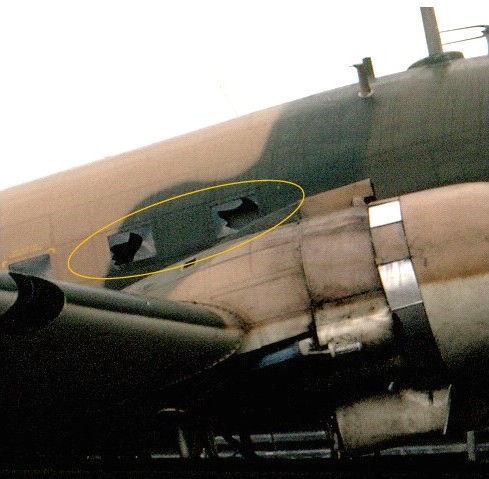 |
Aftermath — Dick's EC-47Q (S/N unknown, but we're looking) Click on views for full-size image.
After completing my inspection of the aircraft, I walked up to the remains of the rocket casing sticking out of the tarmac. Foolishly maybe, I pulled it from the ground. Good thing there was not an unexploded warhead buried in the debris. These rocket pieces somehow later found their way into my A-3 bag when I left Da Nang. The morning of the 19th found me back in the air on another routine mission but not before the VC followed up their attack of the preceding day with two more rockets. This attack resulted in no casualties or damage and was the last one I remember before my DEROS.
_____
* The total number of rocket attacks on Da Nang vary widely depending on the source. Often the rockets might miss the base entirely and impact in the nearby city. These attacks might not appear in the official count. The number of casualties quoted includes both military and civilian.
About the author: Lt Col Richard “Dick” Graham began his Air Force career upon graduation from Oklahoma State University in 1970 as an AFROTC Distinguished Graduate. After pilot training in 1971, then-Second Lieutenant Graham was assigned to the 362nd TEWS at Da Nang AB, RVN. Here he served as an EC-47 pilot and aircraft commander. After Vietnam he was assigned to KC-135 tankers at Travis AFB, CA where he was an aircraft commander and instructor pilot. Later he was transferred to Offutt AFB, Nebraska, flying RC-135 reconnaissance aircraft. In 1981, he was selected as the first aircraft commander for the new KC-10 Extender tamker/cargo aircraft where he served as squadron Chief Pilot during the operational testing and development of the aircraft. Lt Col Graham is a 1984 graduate of the United States Air Force Air Command and Staff College. Following staff college, he held headquarters positions in KC-10 standardization, flight testing, and training. His awards and decorations include the Distinguished Flying Cross, the Meritorious Service Medal, Air Medal (with five oak leaf clusters), the Air Force Commendation Medal and the Republic of Vietnam Gallantry Cross with Palm. After his retirement from the Air Force in 1990, Dick began a second career as a pilot with Delta Air Lines. He is now retired and living with his wife, Georganne, in the North Texas area.
Article uploaded 27 June 2020
More of Dick's Pics
(Click on any image to enlarge)
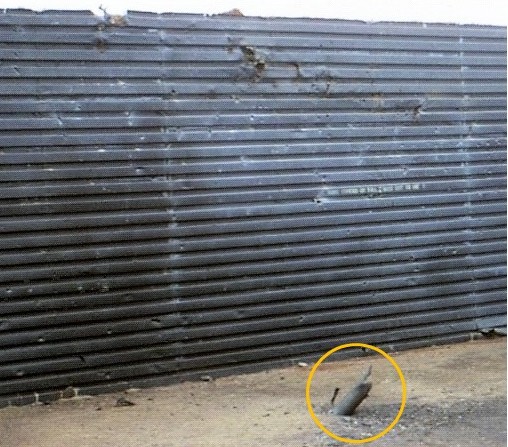 |
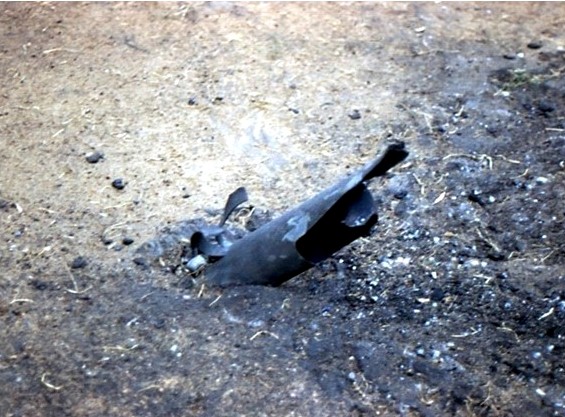 |
 |
Souvenir of the 18 August 1972 attack. Dick still has the fragments—and all his fingers.
 |
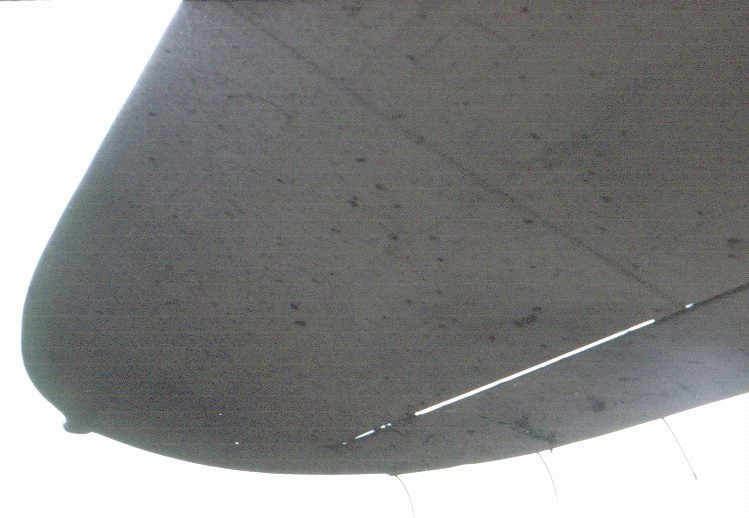 |
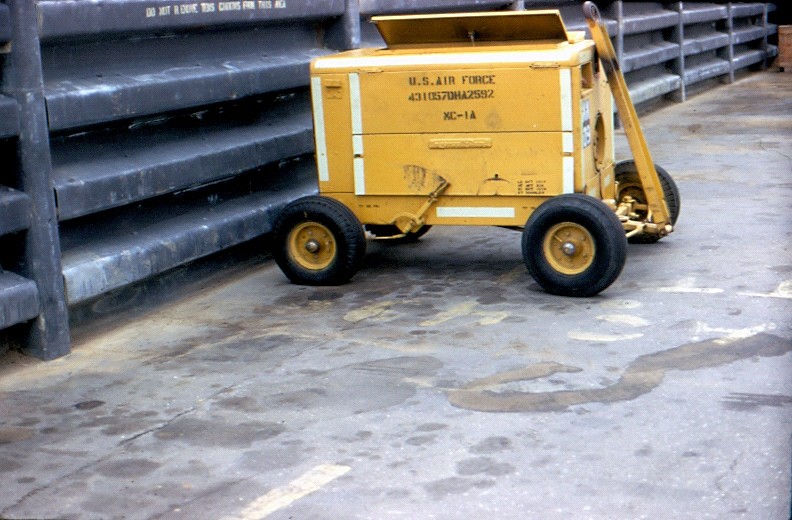 |
(L to R) Dick's aircraft afterwards; wing peppered; Dick's emergency bunker.
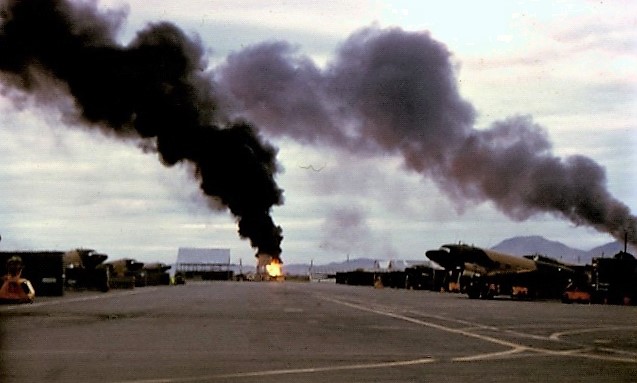 |
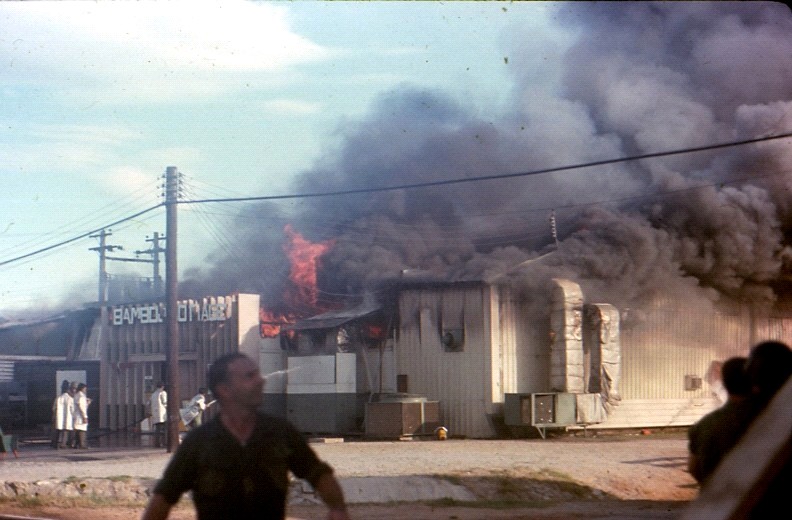 |
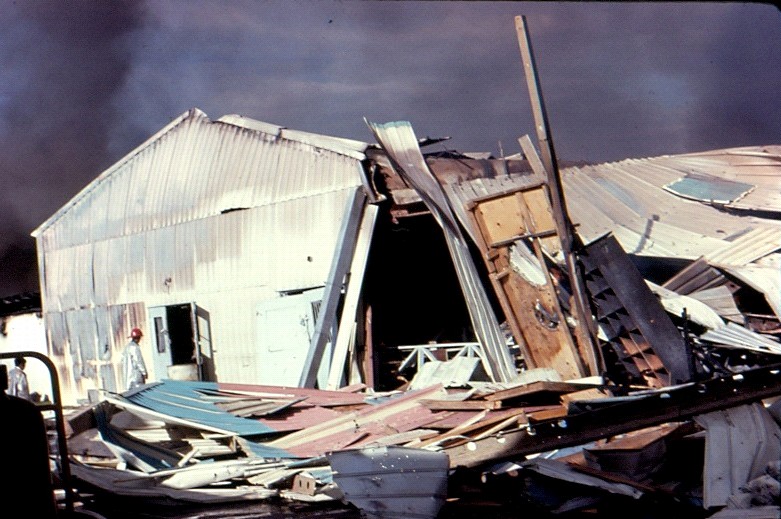 |
Da Nang Devastation. (L to R) EC-47 ramp, BX and restauarant, BX afterwards.
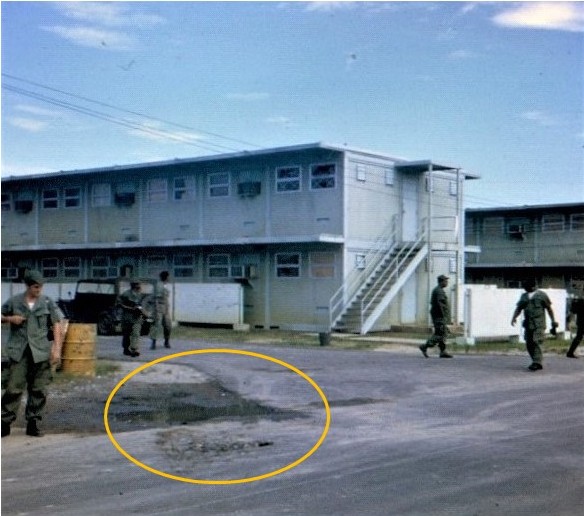 |
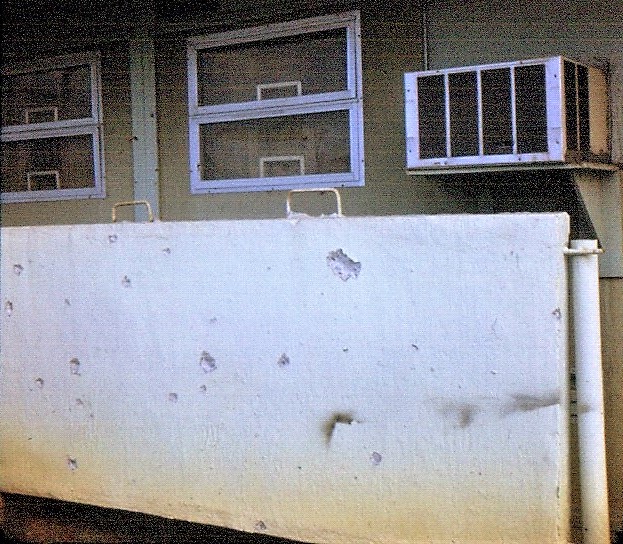 |
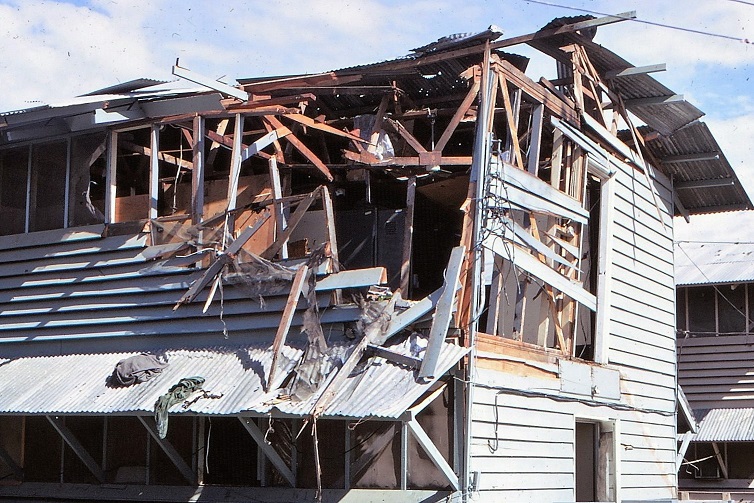 |
Near miss ... Dick's barracks beyond, with shrapnel pockmarks. Enlisted troops hootch not so lucky.
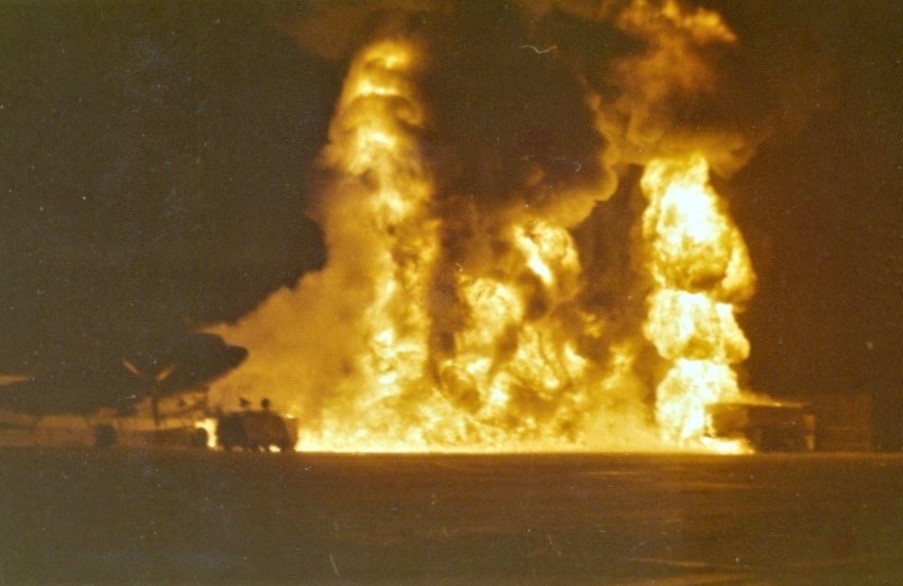 |
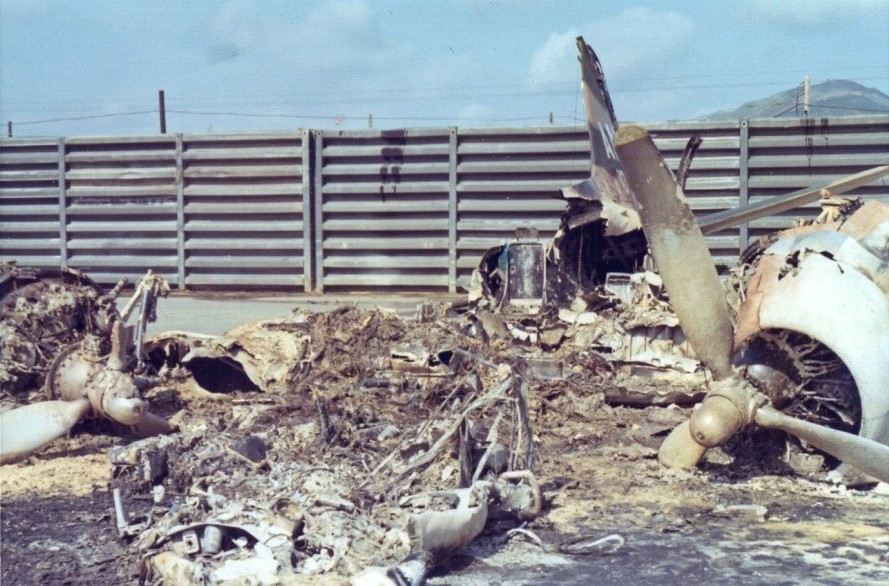 |
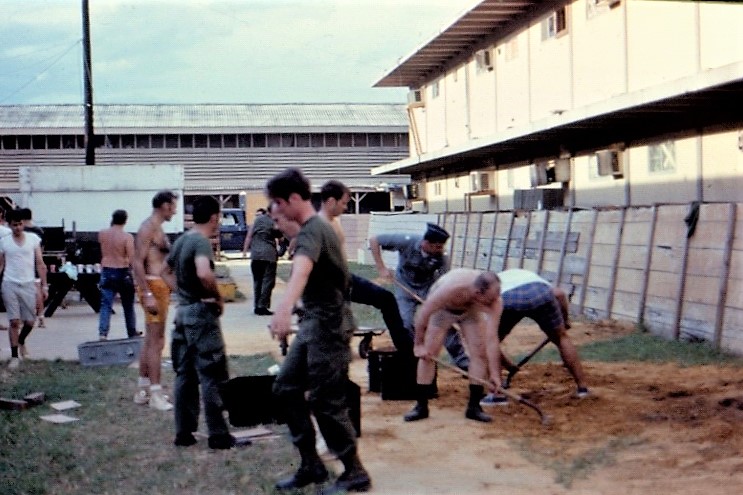 |
(L to R) Attack of 13 April 1972. Remains of 45-1102; sandbag detail later.
Note: Dick previously sent us some Stars and Stripes clippings mentioning rocket attacks and other "newsworthy items" of the day. Click here to view those.
* * *
Update: 12 December 2020. CMSgt (Ret) Gary Chaffin, who was at Da Nang with the 366th Civil Engineering Squadron, recalls this attack much as Dick does. He sent this shot (cropped a bit from his original) of 102's remains, taken from a slightly different angle.
